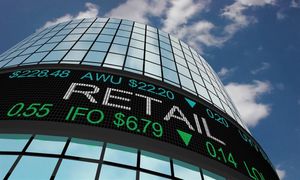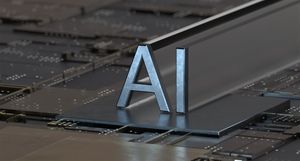Trade uncertainty is depressing new-crop sales of US corn and soybeans
DENVER, May 22, 2025 (GLOBE NEWSWIRE) -- Ongoing uncertainty about the direction of international trade policy is clouding the outlook for U.S. grain elevators and merchandisers. The lack of clarity surrounding tariffs with key U.S. trading partners like China has pulled new-crop sales well below historical averages. Many foreign buyers have reduced forward coverage and are buying in the spot market, complicating the picture for elevators and merchandisers that are heavily reliant on export demand.
According to a new research brief from CoBank’s Knowledge Exchange, the longer the uncertainty continues to drag on sales of new-crop exports, export-dependent grain elevators and merchandisers risk entering the 2025/26 marketing year with greater reliance on local demand, which may be scarce in some regions.
“Elevators and grain merchandisers with exposure to high-risk export markets, especially China, may be forced into widening new-crop basis to attract local demand,” said Tanner Ehmke, grains and oilseeds economist with CoBank. “Basis for corn, soybeans and wheat is strong now. However, if new-crop sales remain lethargic, basis could weaken substantially, particularly for soybeans in the northern Plains and northern Midwest with high exposure to the Chinese market.”
As of May 1, U.S. new-crop export sales were well below their five-year historical averages, with soybeans falling 88.2% and corn dropping 26.9%. All-wheat sales were slightly ahead of their five-year average at the beginning of May. China has been conspicuously absent with no sales on the books for U.S. soybeans, corn or wheat. Since the tariffs were initially announced, China escalated purchases of soybeans from Brazil, suspended soybean shipments from three U.S. companies and signed letters of intent with Argentine exporters to purchase soybeans, corn and vegetable oil.
Mexico and Japan, the second and third largest markets for U.S. soybeans, are also lagging well below historical purchases of new-crop soybeans for this time of year. Wheat sales into major markets like the Philippines and Korea lag historical levels, while corn new-crop sales to important destinations like Japan and Latin America are behind average.
Strong old-crop sales and domestic usage that has supported local basis have largely masked the drop in new-crop sales. Total U.S. export commitments for the 2024-2025 marketing year are up 27% for corn, 13% for soybeans and 14% for wheat year-over-year. Processing margins for soybean crushers and ethanol producers have been positive while feeding margins from livestock and poultry feeders are strong.
For grain elevators and merchandisers that typically book grain sales out several months in advance, the headwinds of trade uncertainty remain firmly in place. While trade negotiations between the U.S. and China and numerous other countries have been announced, the lack of clarity on policy will continue to be a drag on U.S. new-crop grain and oilseed sales.
However, Ehmke said some elevators and merchandisers will avoid the worst impacts of a challenging trade environment and others may benefit from changing market dynamics.
“Elevators with the advantage of strong local demand from ethanol plants, soybean crushers, flour mills and livestock operators will be shielded from the loss of export business. For those that do rely on export demand, lower rail rates could provide an opportunity for captive bushels to move east, while a weakening U.S. dollar may attract new export demand from smaller markets to help backfill the loss of sales to China.”
Read the research brief, Trade Uncertainty Depressing New-Crop Sales.
About CoBank
CoBank is a cooperative bank serving vital industries across rural America. The bank provides loans, leases, export financing and other financial services to agribusinesses and rural power, water and communications providers in all 50 states. The bank also provides wholesale loans and other financial services to affiliated Farm Credit associations serving more than 78,000 farmers, ranchers and other rural borrowers in 23 states around the country.
CoBank is a member of the Farm Credit System, a nationwide network of banks and retail lending associations chartered to support the borrowing needs of U.S. agriculture, rural infrastructure and rural communities. Headquartered outside Denver, Colorado, CoBank serves customers from regional banking centers across the U.S. and also maintains an international representative office in Singapore.

Corporate Communications CoBank 800-542-8072 news@cobank.com
More News
View More




Recent Quotes
View More
Quotes delayed at least 20 minutes.
By accessing this page, you agree to the Privacy Policy and Terms Of Service.